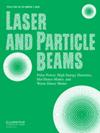Path to Increasing p-B11 Reactivity via ps and ns Lasers
IF 1.9
4区 物理与天体物理
Q4 PHYSICS, APPLIED
引用次数: 7
Abstract
The Lawson criterion for proton-boron (p-11B) thermonuclear fusion is substantially higher than that for deuterium-tritium (DT) because the fusion cross section is lower and peaks at higher ion energies. The Maxwellian averaged p-11B reactivity peaks at several hundred keV, where bremsstrahlung radiation emission may dominate over fusion reactions if electrons and ions are in thermal equilibrium and the losses are unrestricted. Nonequilibrium burn has often been suggested to realize the benefits of this aneutronic reaction, but the predominance of elastic scattering over fusion reactivity makes this difficult to achieve. The development of ultrashort pulse lasers (USPL) has opened new possibilities for initiating nonequilibrium thermonuclear burns and significant numbers of p-11B alpha particles have been reported from several experiments. We present an analysis that shows that these significant alpha yields are the result of beam fusion reactions that do not scale to net energy gain. We further find that the yields can be explained by experimental parameters and recently updated cross sections such that a postulated avalanche mechanism is not required. We use this analysis to understand the underlying physics of USPL-driven nonequilibrium fusion reactions and whether they can be used to initiate fusion burns. We conclude by outlining a path to increasing the p-11B reactivity towards the goal of achieving ignition and describing the design principles that we will use to develop a computational point design.利用ps和ns激光提高p-B11反应性的途径
质子-硼(p-11B)热核聚变的劳森判据比氘-氚(DT)的判据要高得多,这是因为质子-硼(p-11B)热核聚变的截面更小,并且在离子能量更高的地方达到峰值。麦克斯韦平均p-11B反应性在几百keV处达到峰值,如果电子和离子处于热平衡且损失不受限制,则轫致辐射发射可能主导聚变反应。非平衡燃烧通常被认为是实现这种无中子反应的好处,但是弹性散射比聚变反应的优势使得这很难实现。超短脉冲激光(USPL)的发展为引发非平衡热核烧伤开辟了新的可能性,并且从几个实验中已经报道了大量的p-11B α粒子。我们提出的分析表明,这些显著的α产率是束聚变反应的结果,不能按比例计算净能量增益。我们进一步发现,产量可以用实验参数和最近更新的横截面来解释,这样就不需要假设的雪崩机制。我们利用这一分析来了解uspl驱动的非平衡聚变反应的潜在物理特性,以及它们是否可以用来引发聚变燃烧。最后,我们概述了增加p-11B反应性的途径,以实现点火目标,并描述了我们将用于开发计算点设计的设计原则。
本文章由计算机程序翻译,如有差异,请以英文原文为准。
求助全文
约1分钟内获得全文
求助全文
来源期刊

Laser and Particle Beams
PHYSICS, APPLIED-
CiteScore
1.90
自引率
11.10%
发文量
25
审稿时长
1 months
期刊介绍:
Laser and Particle Beams is an international journal which deals with basic physics issues of intense laser and particle beams, and the interaction of these beams with matter. Research on pulse power technology associated with beam generation is also of strong interest. Subjects covered include the physics of high energy densities; non-LTE phenomena; hot dense matter and related atomic, plasma and hydrodynamic physics and astrophysics; intense sources of coherent radiation; high current particle accelerators; beam-wave interaction; and pulsed power technology.
 求助内容:
求助内容: 应助结果提醒方式:
应助结果提醒方式:


